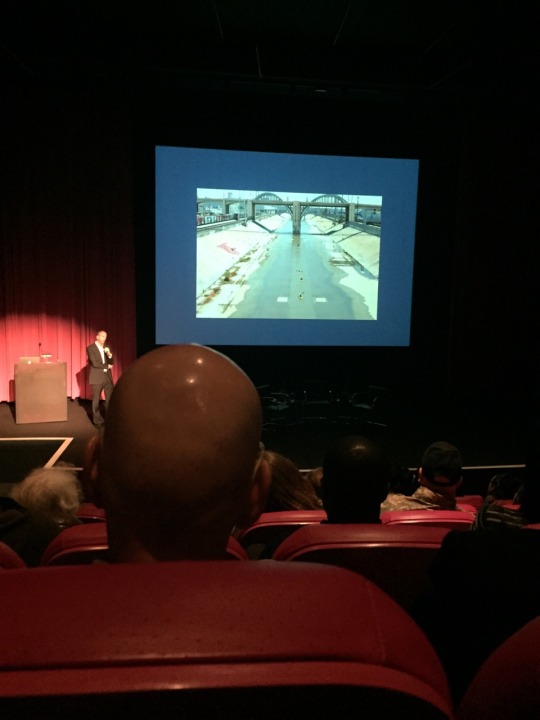 |
| Fleischli and the LA River. Or lack thereof. |
The first lecturer was Steve Fleischli, Director of the Water Program at the National Resources Defense Center. Fleischli shared photographs from his travels through which he evaluates the state of rivers throughout the world. The photos ranged from small tributaries to large bodies of water, all suffering through some state of distress. In the image below, the fresh water stream that flows into the city river on the left is obviously clean while the city river is green and disgusting. The juxtaposition of the images illustrate the apathy of maintaining water sources in big cities. The building in the background of the picture on the right, a symbol of human development, looms ominously above the dirty river, a symbol of nature that has been abandoned in favor of focusing on industry.
Fleischli's imagery not only provided firsthand evidence of the quality (or lack thereof) of water across the globe, but also offered a visual representation for the state of every location he visited. The LA River, shown in the first picture above, is barely even a river. But what do you expect when you build a city in a barren desert and expect it to flourish? The images of the pig farm lagoons of the American South provided a rare glimpse at the reality of the meat industry and its impact not only on mistreated livestock but also on the environment at large. The lagoons, Fleischli explained, were giant vats of pig excrement that were carelessly left to fester in the sun until being used to fertilize fields. When a bad storm rolled in, the lagoons overflowed and their toxic waste contaminated everything it came across.
Through examples such as the pig farm, it was obvious that advancements in technology have affected our rivers. We may grow as a society, but we often forget one of the most basic necessities that keep us alive -- water. Fleischli's lecture helped me better understand the need to balance human progress and sustaining what we already have.

No comments:
Post a Comment